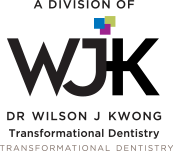VDEC LOGIN
Resources
Enhancing Clinical Predictability & Efficiency of Direct Posterior Restorations Using Bulk Fill Composites
Jun 06, 2016
Enhancing
Clinical Predictability & Efficiency of Direct Posterior Restorations Using
Bulk Fill Composites
Wilson Kwong
650 West 41st Ave.
#218
Vancouver, BC,
Canada V5Z2M9
778-228-6358
wjkwong@me.com
Abstract
Posterior composites have
been an alternative to amalgam, but their use has beenaccompanied by greater
placement-related challenges, including technique sensitive protocol, polymerization
shrinkage, and shrinkage stress that result in marginal leakage, secondary
caries, and postoperative sensitivity and pain for the patient. To eliminate
the need for time consuming protocol and ensure long-term clinical
predictability of direct posterior composite restorations, bulk fill composites
have been introduced that can be placed in a single increment or layer of up to
4 mm, then light polymerized. This article reviews the time-saving and
clinically predictable characteristics of bulk fill composites and presents two
cases that demonstrate their efficient ease of use.
Introduction
Among the treatments most
frequently performed by dentists today are direct posteriorcomposite
restorations. Posterior composites have been an alternative to amalgam for at
least 40 years, but their use has traditionally been accompanied by greater
placement-related challenges and higher failure rates.1 Complications may be attributed, in part, to the consequences of
not properly following the technique sensitive protocol involved with posterior
composite placement, and/or the characteristics of the materials themselves.
Techniques for placing
posterior composite restorations have usually involved placing and curing
multiple layers of composite in increments of 2 mm or less, which is typically
a long and complicated procedure.2-5 If not properly performed,
complications from this type of incremental composite placement can include
polymerization shrinkage and shrinkage stress that result in marginal leakage,
secondary caries, and postoperative sensitivity and pain for the patient.4,5 In terms of the variety of composites available today, some may be
considered suitable for universal indications (i.e., anterior and posterior
restorations), while others are most appropriate for either anterior or posterior placement based
on their chemical and material composition and, therefore, their esthetic,
wear, and strength characteristics.6
Interestingly, however,
researchers have found that it is a combination of restorativematerial
placement and curing techniques, and material characteristics, that influence
the success and longevity of direct posterior composite restorations.7-10 Therefore, to eliminate the need for time consuming protocol—yet
ensure long-term clinical predictability (i.e., reduced shrinkage stress,
elimination of microleakage, prevention of secondary caries, prevention of
postoperative sensitivity)—numerous manufacturers have developed direct
composites that can be placed in a single increment or layer of up to 4 mm,
then fully cured (i.e., bulk fill composites). As a result of their specific
material characteristics, available bulk fill composites (e.g., Tetric EvoCeram® Bulk Fill, Tetric EvoFlow® Bulk Fill, Ivoclar
Vivadent; Venus® Bulk Fill, Heraeus;
SonicFill, Kerr) help to eliminate the challenges associated with conventional
posterior composite materials.
For example, the ability to
be cured to a depth of 4 mm eliminates the need for time consuming and
technique sensitive layering, and better handling properties facilitate
enhanced marginal adaptation to preparations. Additionally, the low
polymerization shrinkage stress of bulk fill composites reduces microleakage,
postoperative sensitivity, and secondary caries.11,12
The following cases
demonstrate the time-saving and clinically predictable characteristics of bulk
fill composites, as well as their efficient ease of use. For the cases
presented, one particular bulk fill composite (i.e., Tetric EvoCeram Bulk Fill,
Tetric EvoFlow Bulk Fill) was selected based on its handling, esthetic, and
material/strength properties.8,13,14
Case
Presentation #1
A patient presented with
caries on the mesial aspect of the upper right second molar, tooth #2, which was confirmed
radiographically (Figure 1). Treatment was planned to remove the caries and place a
mesial-occlusal (MO) direct composite restoration, as well as examine grooves
on the adjacent teeth.
In the past, posterior
teeth would have been treated with simple amalgam or compositerestorations, or
indirect gold, porcelain, or laboratory-fabricated restorations.15 However, given the small size and location of the defect, a small
cavity preparation would be ideal using the most conservative adhesive bonding
techniques possible. A bulk fill composite containing a patented light-initiator
(i.e., Tetric EvoCeram Bulk Fill; Ivocerin®) was selected based on the deeper
and more efficient depth-of-cure and shorter curing time provided.13
The patient was
anesthetized, and a rubber dam was placed to ensure proper and complete
isolation. Caries was exposed, and a caries detection solution was placed.
Caries removal was completed, and the preparation was cleansed with a 2%
chlorhexidine scrub via syringe and brushes to remove debris and decrease the
bacterial load, as well as condition the dentin preparation for the MO
restoration (Figure 2).16,17
The teeth were rinsed and
dried, and a matrix band (Palodent) and V-Ring (Dentsply) were placed. A total
etch technique was used, and the enamel and dentin of the preparation were etched
with a 30% hydrophosphoric acid for 20 and 15 seconds, respectively (Figure 3),
and then vigorously rinsed for 10 to 15 seconds. The preparation was lightly
dried with a warm air tooth dryer (Adec), leaving the dentin slightly moist.
Additionally, the adjacent teeth were etched to subsequently enable bonding and
sealing of the grooves using Tetric EvoFlow Bulk Fill and polymerization.
A universal adhesive
indicated for use on both dry and moist dentin (Adhese® Universal, Ivoclar Vivadent) was scrubbed to the preparation and
light-cured for 10 seconds using an LED curing light (Bluephase® Style, Ivoclar Vivadent) (Figure 4).
Then, the restoration was
completed using a single 4-mm increment of the nano-hybrid bulk fill composite
(Tetric EvoCeram Bulk Fill/IVA Shade). The selected bulk fill composite demonstrates
an enamel-like translucency of 15%, which would contribute to an “invisible” blending
of the restoration with surrounding natural tooth structure. Available in three
universal shades (e.g., IVA for slightly reddish teeth; IVB for slightly
yellowish teeth; and IVW for deciduous fillings or light-colored teeth), the
selected bulk fill composite is also highly radiopaque, which is ideal for
identification of radiographs.
The bulk fill composite was
placed into the preparation, a step that was enhanced by the material’s layered
silicates. The bulk fill composite’s smooth consistency adapted nicely to the preparation
walls, and the singular increment was easily contoured and sculpted using a conventional
composite placement instrument (OptraSculpt, Ivoclar Vivadent). No additional expensive
equipment was necessary.
The restoration was then
cured fully for 10 seconds using an LED curing light. As a result of the
photo-initiator contained in the selected bulk fill composite, the 4 mm
increment could be thoroughly cured in 10 seconds using an LED curing light
with a minimum output greater than 1,000 mW/cm2.
The band and ring were
removed, and the occlusion adjusted using finishing diamonds.The restoration(s)
was finished using carbide-fluted finishing burs (3M, ESPE, Sof-Lex), polished
utilizing a one-step, high-gloss polishing system (Optrapol, Ivoclar Vivadent),
flossed and revealed (Figure 5). Interestingly, because the selected bulk fill
composite (Tetric EvoCeram Bulk Fill) contains two types of glass fillers with
different mean particle sizes, restorations withstand posterior wear well, yet
also demonstrate ideal polishing properties.13 The marginal seal of the MO
restoration was the confirmed radiographically (Figure 6).
Case
Presentation #2
A 19-year-old male patient
presented with caries on the mesial aspect of the upper rightsecond molar
that was confirmed radiographically (Figure 7). Treatment was planned to remove the caries and place a
mesial direct composite restoration, as well as examine the distal aspect of neighboring
tooth #16.
The patient was
anesthetized, and a rubber dam was placed to ensure proper and complete
isolation. Caries was removed, caries detection solution placed to ensure 100% removal,
and the tooth prepared for a mesial restoration (Figure 8). The preparation was
then cleansed with a 2% chlorhexidine scrub using a syringe and brushes to
remove debris created during preparation.
The teeth were rinsed and
dried, and in this case, a matrix band, wedge, and ring were placed. The teeth
were selectively etched with phosphoric acid on the enamel margins only, thoroughly
rinsed, and then dried. A universal adhesive was applied to the preparation
(Figure 9), and it was rubbed vigorously onto the dentin using the application
tip and then onto the enamel, after which it was blown thin and light-cured for
10 seconds using an LED curing light.
To complete the
restorations, Tetric EvoCeram Bulk Fill composite (i.e., IVA shade) was placed
into the preparation in a single increment (Figure 10), then shaped and
contoured to create the proper anatomy using a composite placement instrument.
This bulk increment was lightcured for 10 seconds from each of the proximal
aspects (Figure 11).
The band, wedge, and ring
were removed and the occlusion adjusted using finishing instruments (e.g.,
Sof-Lex, 3M ESPE) (Figure 12). A final polish was performed using a series of grey,
green, and pink polishing points and brushes (Astropol, Ivoclar Vivadent)
(Figures 13), after which the rubber dam was removed and the bite verified and
adjusted, as necessary (Figures14 and 15).
Conclusion
To eliminate the need for
time consuming protocol and ensure long-term clinical
predictability of direct posterior composite restorations, bulk
fill composites can be placed in a single increment or layer of up to 4 mm,
then fully cured. However, as important as placement and curing techniques are
to the success and longevity of posterior restorations, so too are material
characteristics. Therefore, when choosing bulk fill composites for direct
posterior restorations, it behooves dentists to choose those materials that
will truly be time-saving, efficient, and most importantly, clinically
predictable. For the cases presented here, the author
choose a nano-hybrid bulk fill composite (Tetric EvoCeram Bulk
Fill, Tetric EvoFlow Bulk Fill) based on its low polymerization shrinkage; low
shrinkage stress; depth of cure; esthetics, handling, and radiopacity; and overall
clinical predictability.
References
1. Sarrett DC. Clinical challenges and the relevance of materials
testing for posterior compositerestorations. Dent Mater. 2005 Jan; 21 (1):9-20.
2. Wieczkowski G Jr, Joynt RB, Klockowski R, Davis EL. Effects of
incremental versus bulk fill technique on resistance to cuspal fracture of
teeth restored with posterior composites. J Prosthet Dent.1988;60(3):283-287.
3. Fabianelli A, Sgarra A, Goracci C, et al. Microleakage in class
II restorations: open vs closed centripetal build-up technique. Oper Dent. 2010;35(3):308-313.
4. Giachetti L, Scaminaci Russo D, Bambi C, Grandini R. A review
of polymerization shrinkage stress: current techniques for posterior direct
resin restorations. J Contemp Dent
Pract. 2006 Sep 1;7 (4):79-88.
5. Cheung GS. Reducing marginal leakage of posterior composite
resin restorations: a review of clinical techniques. J Prosthet Dent. 1990 Mar;63(3):286-8.
6. Ferracane JL. Resin composite--state of the art. Dent Mater. 2011 Jan;27(1):29-38. Epub
2010 Nov 18.
7. Campodonico CE, Tantbirojn D, Olin PS, Versluis A. Cuspal
deflection and depth of cure in resin-based composite restorations filled by
using bulk, incremental and transtooth-illumination techniques. J Am Dent Assoc. 2011 Oct;142(10):1176-82.
8. Utterodt A, Rist AC, Eck M, Schaub M. Polymerization shrinkage
stress and flexural strength of nano-composites. 42nd annual meeting of
IADR-Continental: 2007.
9. Van Ende A, De Munck J, Mine A, Lambrechts P, Van Meerbeek B.
Does a low shrinking composite induce less stress at the adhesive interface? Dent Mater. 2010;26(3):215-22.
10. Souza-Junior EJ, de Souza-Régis MR, Alonso RC, de Freitas AP,
Sinhoreti MA, Cunha LG. Effect of the curing method and composite volume on
marginal and internal adaptation of composite restoratives. Oper Dent. 2011 Mar-Apr;36(2):231-8.
Epub 2011 Jun 24.
11. Van Ende A, De Munck J, Van Landuyt KL, et al. Bulk-filling of
high C-factor posterior cavities: effect on adhesion to cavity-bottom dentin. Dent Mater. 2013 ;29(3):269-277.
12. Moorthy A, Hogg CH, Dowling AH, et al. Cuspal deflection and
microleakage in premolar teeth restored with bulk-fill flowable resin-based
composite base materials. J Dent. 2012;40(6): 500-505.
13. Tetric EvoCeram Bulk Fill: The bulk composite without
compromises. Scientific
Documentation. Schaan, Liechtenstein: Ivoclar Vivadent; 2011:
1-20.
14. Roggendorf MJ, Krämer N, Appelt A, Naumann M, Frankenberger R.
Marginal quality of flowable 4-mm base vs. conventionally layered resin
composite. J Dent. 2011 Jul 27. [Epub ahead
of print].
15. Roulet JF. Benefits and disadvantages of tooth-coloured
alternatives to amalgam. J Dent. 1997 Nov;25(6):459-73.
16. Ruse ND, Smith DC. Adhesion to bovine dentin--surface
characterization. J Dent Res. 1991 Jun;70(6):1002-8.
17. Leitune VC, Portella FF, Bohn PV, Collares FM, Samuel SM.
Influence of chlorhexidine application on longitudinal adhesive bond strength
in deciduous teeth. Braz Oral Res. 2011 Sep- Oct;25(5):388-92.
Figure Captions
Figure 1. A preoperative radiograph
revealed mesial decay in the upper right second molar, tooth #17.
Figure 2. Following rubber dam
placement, restorative procedures were performed to remove the decay, and
prepare and condition the tooth for restoration.
Figure 3. Following placement of a
Palodent matrix and Dentsply V-Ring, the preparation for tooth #2 was etched
according to the total etch technique using 30% hydrophosphoric acid. The other
teeth were etched to subsequently enable bonding and sealing of the grooves
using Tetric EvoFlow Bulk Fill.
Figure 4. A universal adhesive was
applied to the preparation and light-cured, after which a single increment of a
nano-hybrid bulk fill composite (Tetric EvoCeram Bulk Fill) was placed to complete
the restoration.
Figure 5. The completed Tetric
EvoCeram and Tetric EvoFlow bulk fill restorations were
finished and polished.
Figure 6. A post-treatment radiograph
confirmed the excellent radiopacity and marginal seal of the bulk filled
restorations.
Figure 7. Preoperative radiograph
revealing mesial decay in the upper right second molar of a 19-year-old male
patient.
Figure 8. After complete caries
removal, the tooth was prepared for a mesial direct composite restoration.
Figure 9. A universal adhesive was
rubbed vigorously onto the dentin using the application tip and then onto the
enamel of the preparation.
Figure 10. Tetric EvoCeram Bulk Fill
composite in Vita shade A (i.e., IVA shade) was placed into the preparation in
a single increment.
Figure 11. After shaping and
contouring to create the proper anatomy, the bulk filled restoration was
light-cured for 10 seconds.
Figure 12. The occlusion was adjusted
using finishing discs (e.g., Sof-Lex, 3M ESPE).
Figure 13. A series of Astropol grey,
green, and pink polishing points (Astropol0 and brushes were used for final
polishing.
Figure 14. Post-treatment view of the
completed Tetric EvoCeram Bulk Fill restoration after finishing and polishing.
Figure 15. A post-treatment radiograph confirmed the excellent radiopacity and marginal seal of the bulk filled restoration.
Click link below for images:
https://www.dropbox.com/l/sh/t2F5z38roCXrfjZUTsbFiq
I’m interested in growing within my field of dentistry.
Please submit an inquiry for our team to answer







